____Home_____
Alberto Carrera
Liesbeth Rahder
Herve Martijn
Judith Heinsohn
Jan van Eden
Esther Levigne
Hugo Keizer
Ger Meinema
Jorge Gay Molins
Jean Bilquin
Achnaton Nassar
Philippe Bouttens
Colette Curfs
Milous Heunks
Tomoko Kawachi
Patricia Lippert
Anton Martineau
Tejo Philips
Pol Mara
Victor Pedra
Mapi Rivera
Chiel Vluggen
Marianne Vollmer
Sadik Kwaish
André
de Jong
Maayke Schuitema
Josef Karl
Unni Askeland
Evelyn Jansen
Harry van der Woud
Diego
Pombo
Raymond Boekelder
Manolo Belzunce
Andreas Helfeld
|
Emma Goldman (June 27, 1869 - May 14, 1940) was a political activist and writer. She played a pivotal role in the development of anarchist political philosophy in North America and Europe in the first half of the 20th century.
Winnie Madikizela-Mandela (1936-2018), South African anti-apartheid activist and the second wife of Nelson Mandela. The ANC leadership, to clear the path to power, issued Nelson Mandela an ultimatum: 'Winnie or the presidency'. Winnie went as far as describing Mandela as a sellout and the Truth and Reconciliation Commission as a sham acting on behalf of Stratcom (Strategic Communications, an agency to create and spread false narratives against political enemies).
Prince Piotr Alekséyevich Kropotkin was a geographer and naturalist, as well as a Russian political thinker. He is considered to be one of the main theoreticians of the anarchist movement. Kropotkin was born in Moscow on December 9, 1842, into a noble family and died on February 8, 1921.
Frantz Omar Fanon (1925, Martinic - 1961, Argelia) was a political radical, Pan-Africanist humanist and Marxist concerned with the psychopathology of colonization and the human, social and cultural consequences of decolonization.
Rosa Luxemburg (Polish: Róża Luksemburg) was born in 1871 in Russian-controlled Poland y executed in Berlin 1919. Foreseeing the First World War, she vigorously attacked what she saw as German militarism and imperialism.
Martin Thembisile Hani (1942 – assassinated 10 April 1993) Desde 1967 comisario político en el Ejército Revolucionario del Pueblo de Zimbabwe, mas tarde líder del brazo armado del ANC y líder comunista popular, assasinado en vísperas de las primeras elecciones democráticas en Sudáfrica.
As long as we inhabit a capitalist democracy, a future of racial equality, gender equality and economic equality will elude us, Angela Davis, 2019
Stephen Bantu Biko (18 de diciembre de 1946 - murió en detención policial en 1977) fue un activista sudafricano contra el apartheid. Ideológicamente un socialista africano, influenciado por el filósofo martinicano Frantz Fanon.
José Julián Martí y Pérez, (1853, Havana, Cuba — 1895, Dos Ríos), was a Cuban poet and essayist, patriot and martyr, who became the symbol of Cuba's struggle for independence from Spain. He died on the battlefield. His goal was to die in battle and not in bed.
Gerta Pohorylle (August 1, 1910 – July 26, 1937), known professionally as Gerda Taro, was a photographer active during the Spaish Civil War and was killed while reporting from the front lines. The name "Robert Capa" was originally an alias that Taro and Capa (born Endre Friedmann) shared.
Patrice Émery Lumumba (1925 - 1960) was the Prime Minister of the independent Republic of the Congo from June to September 1960. In 2002, Belgium formally apologized for its role in overseeing Lumumba's assassination. Patrice Émery Lumumba (1925 – 1960) was a Congolese politician and independence leader who served as the first Prime Minister of the independent Republic of the Congo from June until September 1960. He played a significant role in the transformation of the Congo from a colony of Belgium into an independent republic. Ideologically an African nationalist and Pan-Africanist, he led the Congolese National Movement (MNC) party from 1958 until his assassination.
France's ambassador in Léopoldville maintained
a certain bemused distance when Belgian King Baudouin handed over power to
Lumumba at a solemn ceremony on 30 June 1960. The king lauded the "genius of
King Léopold II", whose rule of the colony had achieved international notoriety.
Lumumba, on the other hand, delivered a "violent diatribe against the regime of
exploiters, executioners and colonialists" and the "humiliating slavery that was
forced upon us", addressing the Congolese people and not the king, who, visibly
embarrassed, "talked to his neighbours". In 2002, Belgium formally apologised for its role overseeing the assassination of Lumumba.
Lumumba, 2013 Oil and acrylic on linen, 180x120x5 cm Reference: 132201
Vanessa Redgrave (1937) – actress and political activist. Redgrave's support for the Palestine Liberation Organization (PLO) was a source of controversy throughout her career. Redgrave defended her position, saying that "the fight against anti-Semitism and the self-determination of the Palestinians form a whole." In 2017, Redgrave made her directorial debut with a documentary about the European migrant crisis, strongly criticizing the British government's policy of exclusion towards refugees.
Ferdinand Domela Nieuwenhuis (1846 – 1919), started out as a Lutheran pastor. Was elected to the parlement in 1888, but turned away from parliamentary democracy and is considered the founder of socialism and anarchism in the Netherlands.
Malcolm Little (1925-assesinated in 1964) better known as Malcolm X, American human rights activist. Declaring opposition to the Korean war in letter from prison to President Truman.
| |
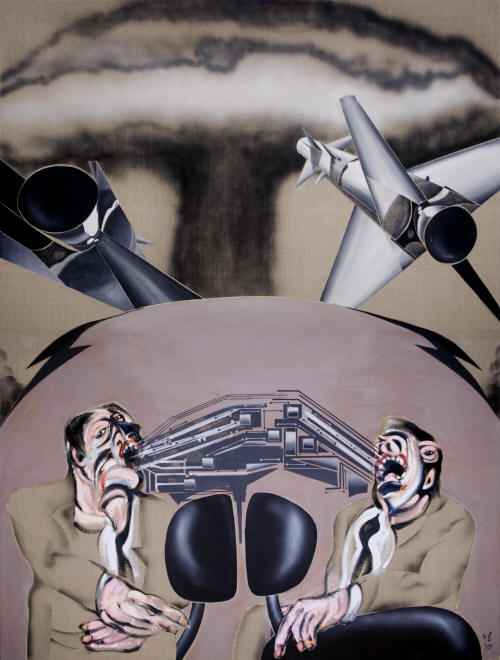 192201-02 192201-02Our leaders planning the nuclear armageddon, bottom, 2019, Oil and acrylic on linen, 120x180 cm The Doomsday Machine The American political activist Daniel Elsberg, who released the Pentagon Papers in 1971 that revealed the secret US government study in relation to the Vietnam War, published “The Doomsday Machine: Confessions of a Nuclear War Planner” in 2020. He paints a doom picture of the future, unless we immediately engage in negotiations with other nuclear armed nations to strengthen the nuclear Non-Proliferation Treaty (NPT) and begin the dismantling of the Doomsday Machine that is programmed to destroy as much life as possible on the planet once global nuclear war begins — a perilously close possibility under the current postures and protocols of nuclear-armed governments.
Kennisoverdracht, 2018, Oil and acrylic on cotton, 150x120 cm In the painting Kennisoverdracht (Transfer of knowledge), he expresses the free and chaotic thinking in the university world. The female teacher is his personal association with acquiring knowledge. A way of thinking that has given the world unconscious knowledge that brings our survival to the edge of an abyss. The innocence of scientists resulting in the birth of Frankenstein. For JvE personally, this is a nostalgic emotional expression of his studies at the University of Groningen, where he graduated in 1964 for his bachelor's degree in mathematics and physics, including Nuclear Physics.
Cuito Cuanavale 1988, end of apartheid, 2021, Oil on linen, 124x55 cm The end of Apartheid in South Africa In March 1988, concerning the battle of Cuito Cuanavale (Southern Angola), the U.S. Defence Intelligence agency conceded that the Cubans had “complete air superiority”. The South Africans were losing the war in Angola, which led to the accords signed on 22 December 1988 at the United Nations in New York by the Foreign ministers of Angola, Cuba and the Republic of South Africa. As a consequence South West Africa (Namibia) and Rhodesia (Zimbabwe) would gain independence, Mandela was freed and the apartheid in South Africa came to its end. Our personal (Jan & Pepa's) involvement with Angola started when we lived there, at the time of decolonisation and independence in 1974.
Brothers in arms, Fidel, Mandela, Gaddafi, 2019, Oil and acrylic on cotton, 40x92x5 cm
Billie Holliday – Strange Fruit, 2022, Oil on Cotton, 150x195
Southern trees bear
a strange fruit In March 1939, a 23-year-old Billie Holiday walked up to the mic at West 4th's Cafe Society in New York City to sing her final song of the night. Per her request, the waiters stopped serving and the room went completely black, save for a spotlight on her face. And then she sang, softly in her raw and emotional voice: "Southern trees bear a strange fruit, Blood on the leaves and blood at the root, Black body swinging in the Southern breeze, Strange fruit hanging from the poplar trees..." When Holiday finished, the spotlight turned off. When the lights came back on, the stage was empty. She was gone. And per her request, there was no encore.
This was how Holiday performed "Strange Fruit," which she would determinedly sing for the next 20 years until her untimely death at the age of 44. Holiday may have popularized "Strange Fruit" and turned it into a work of art, but it was a Jewish communist teacher and civil rights activist from the Bronx, Abel Meeropol, who wrote it, first as a poem, then later as a song.
Greta Garbo - in close-up, 2019, Acrylic on linen, 20x20 cm
Marilyn Monroe - in close-up, 2019, Acrylic on linen, 20x20 cm
Jeanne Moreau - in close-up, 2019, Acrylic on linen, 20x20 cm
Lya Lys in l'lAge d'Or de Luis Bunuel, 2018, Lya
Lys was born Nathalie Margoulis in Berlin on 18 May 1908 (IMDb gives her birth
name as Natalia Lyecht) to a Russian banker and French pediatrician who moved to
Paris when she was about seven. She was educated in France and Switzerland and
later studied language at the
Sorbonne.
|
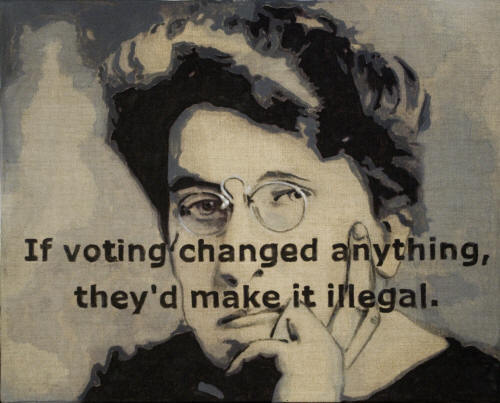 203403
203403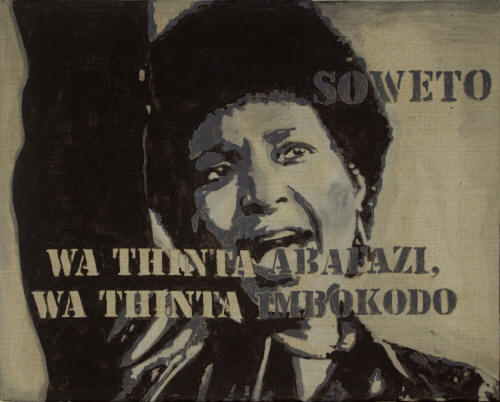 213404
213404 213403
213403 203404
203404 193405
193405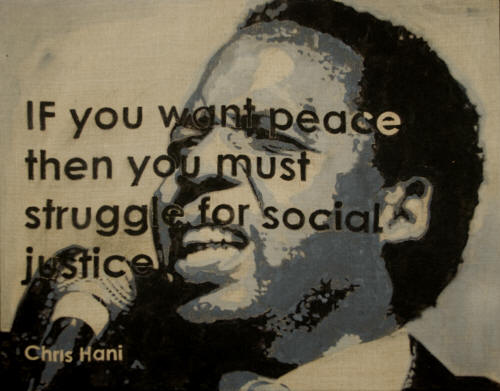 213405
213405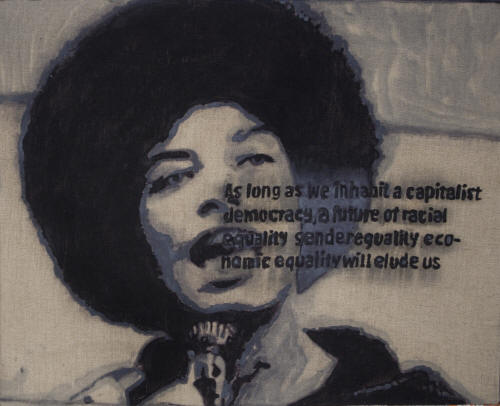 193403
193403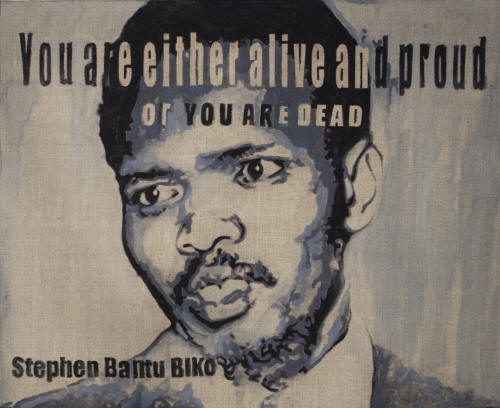 193404
193404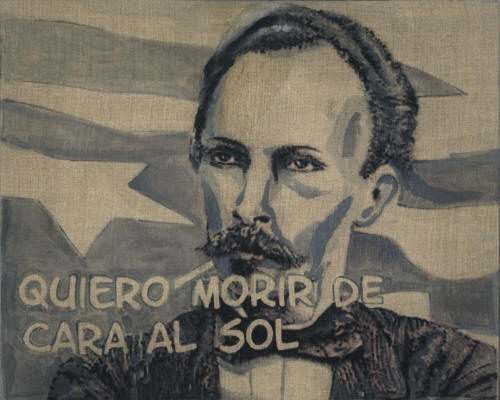 213402
213402 203402
203402 193401
193401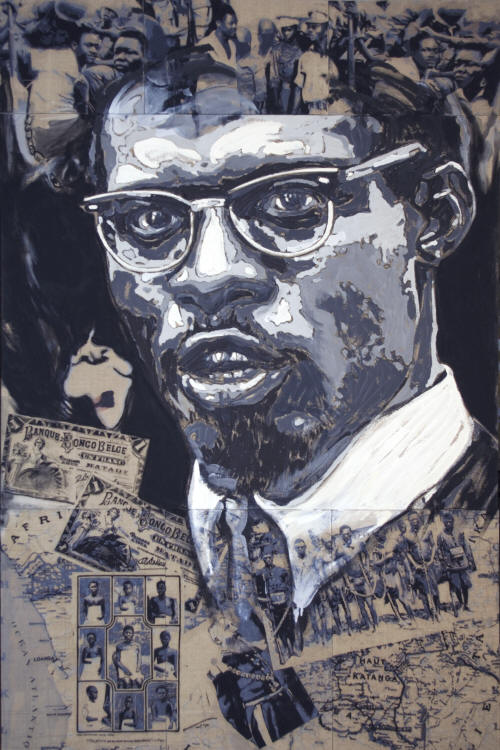
 203406
203406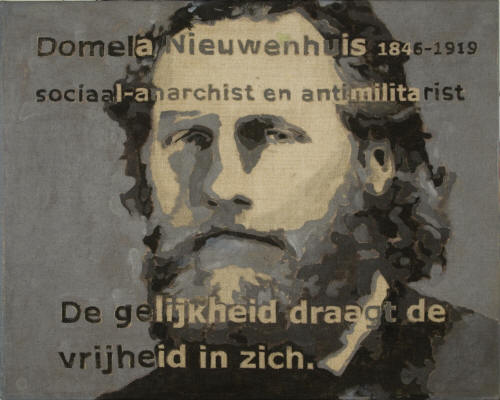 223401
223401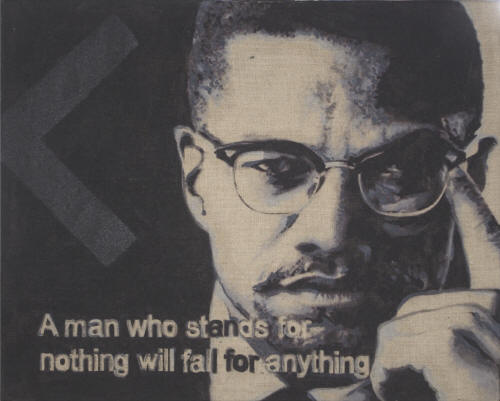 193402
193402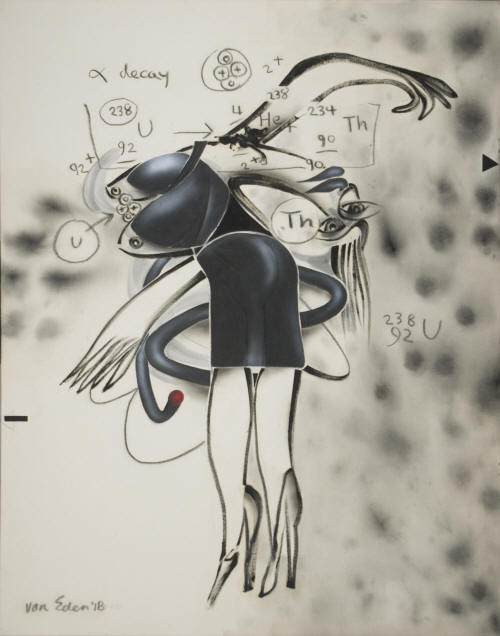 182501
182501 213003-05
213003-05 193001c
193001c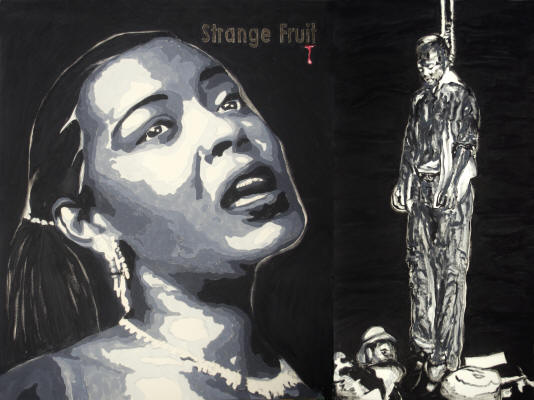 222501-02
222501-02 193704F
193704F 193705F
193705F 193706F
193706F 182504
182504